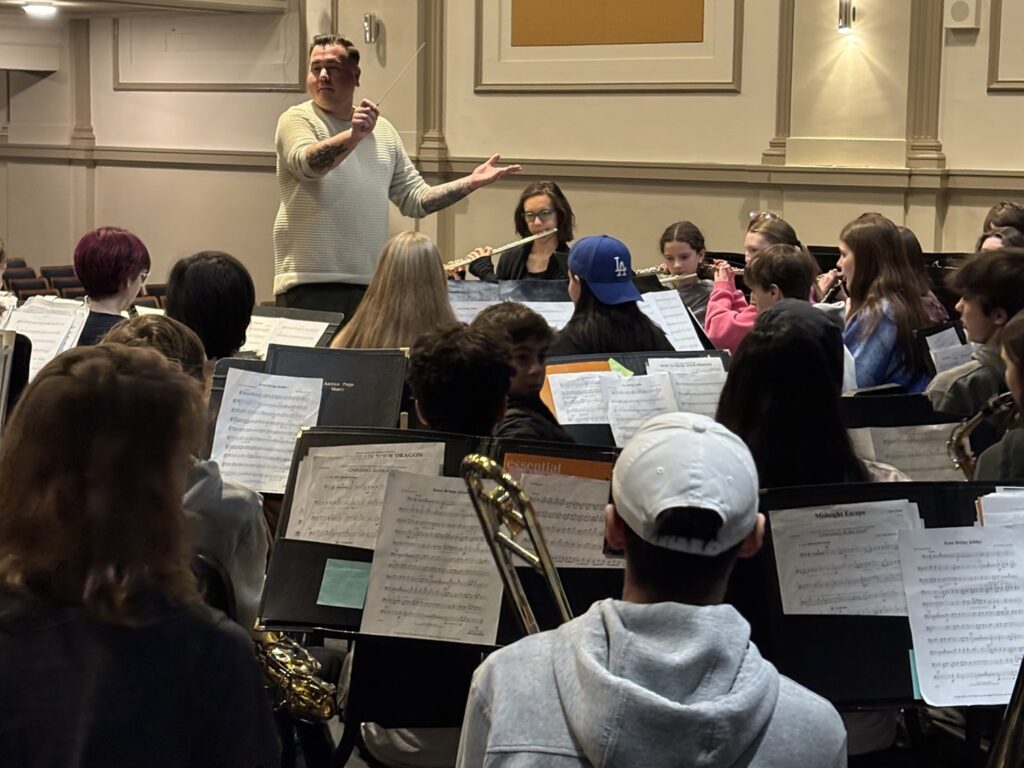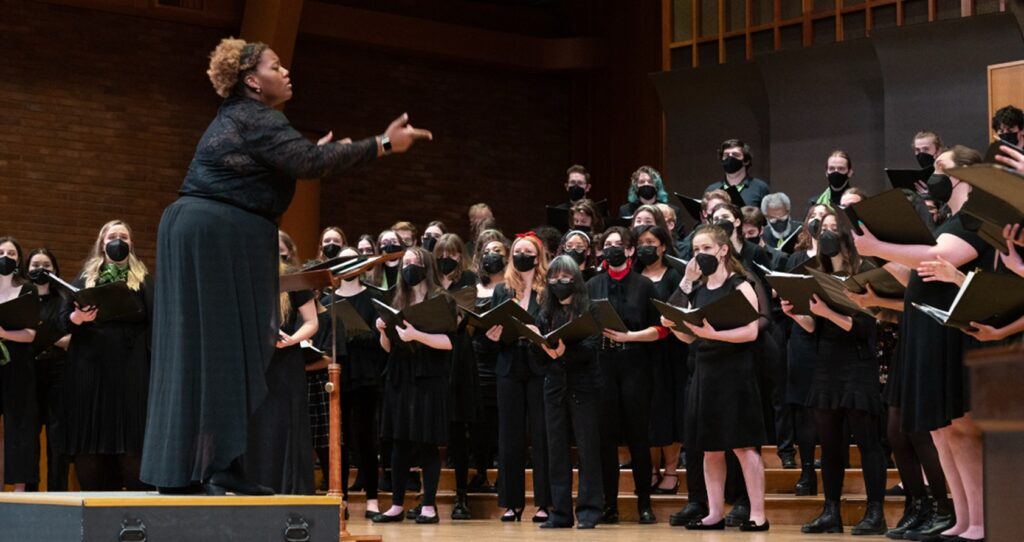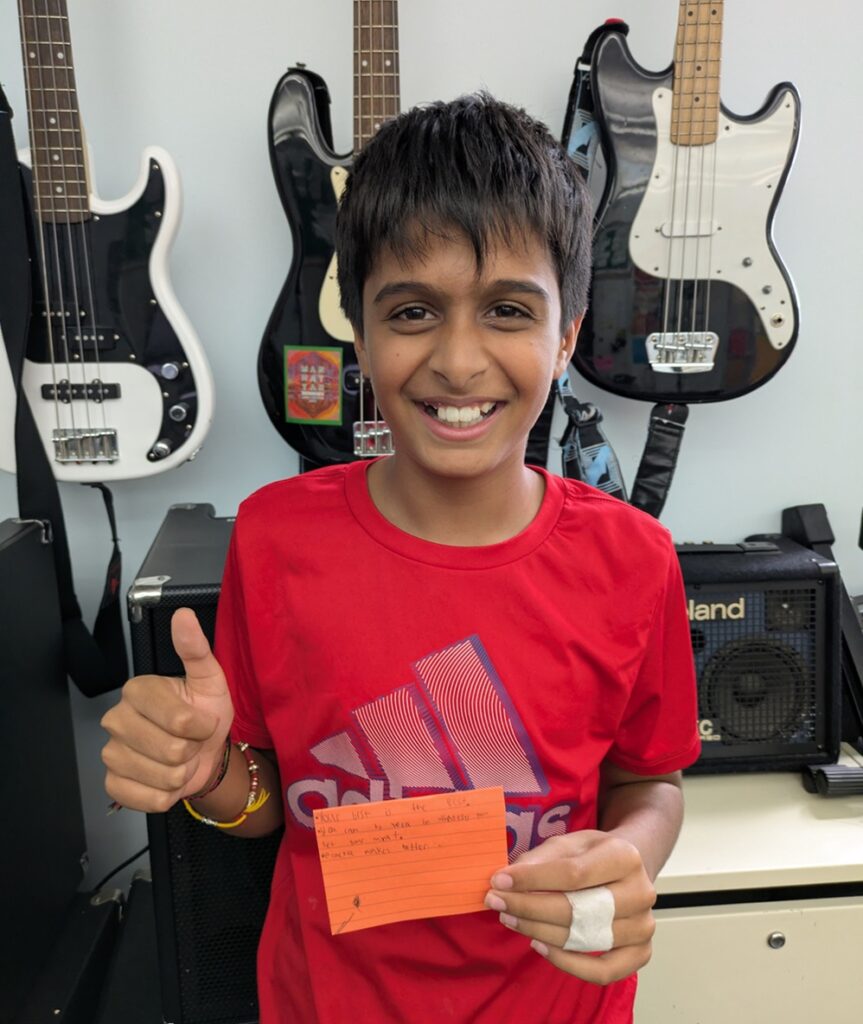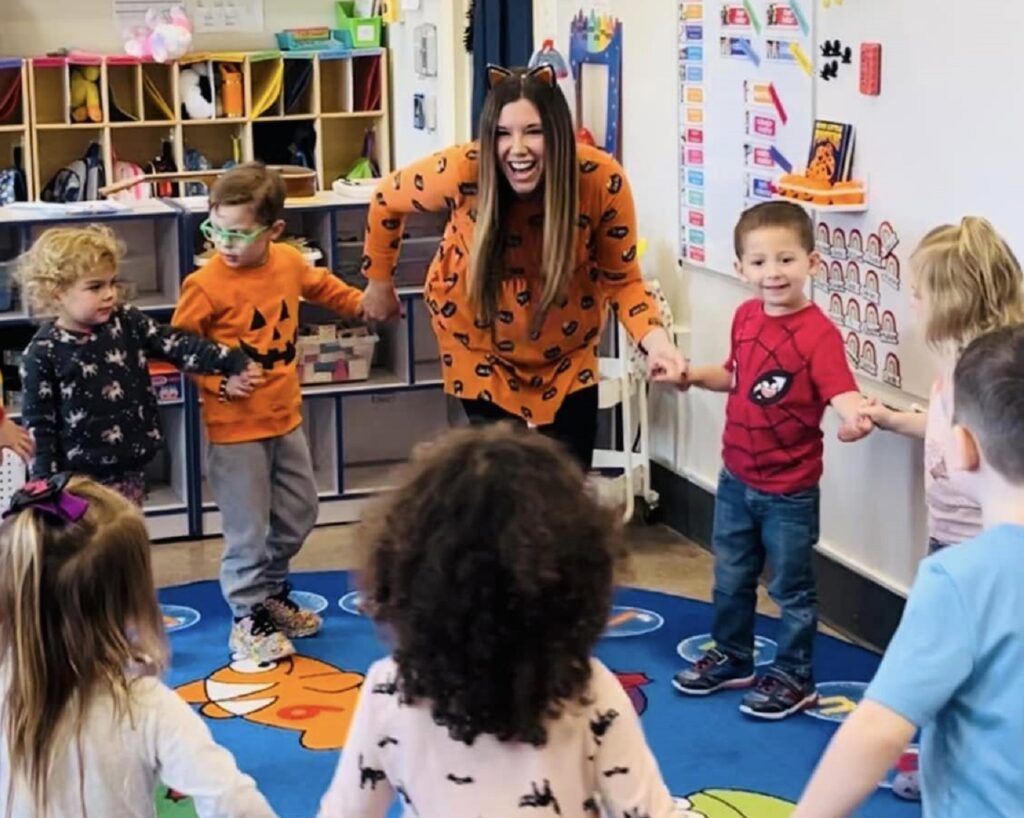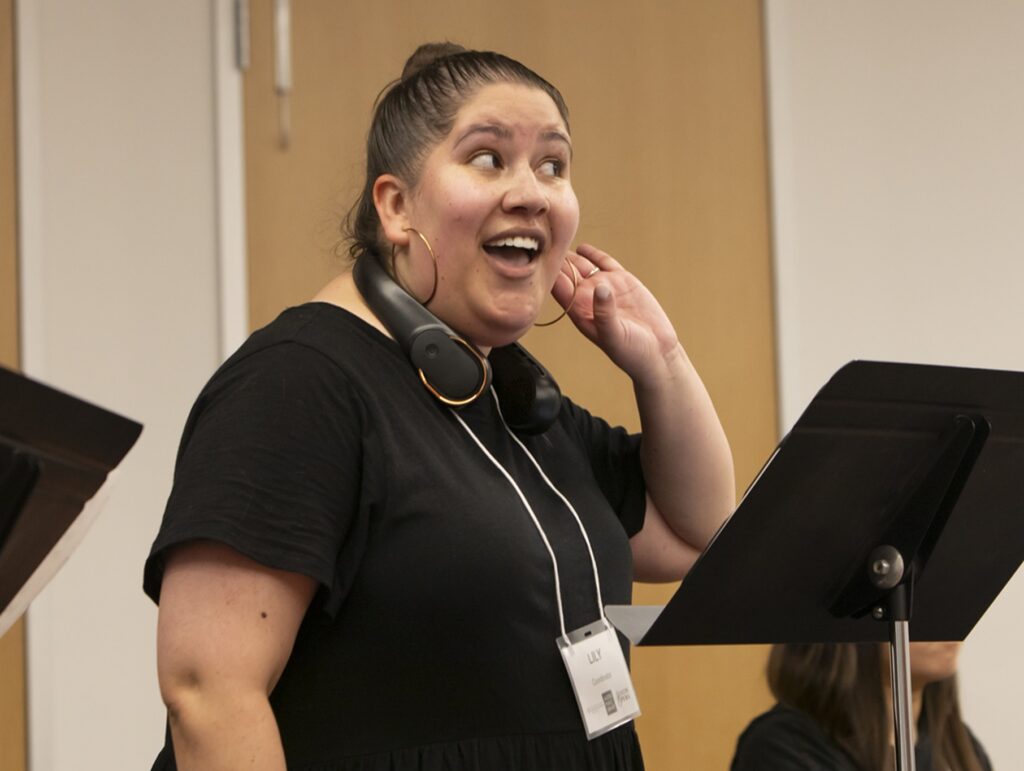Tagged Under:
How to Recognize Good Teaching
Take preservice teachers on guided observations so they can see firsthand some key areas that make music educators successful.
I am a music teacher educator at Virginia Tech, and several years ago, I came to the realization that we sometimes make assumptions about our preservice teachers. A big one is that they know what good teaching looks like. We assume that they had fantastic K-12 music teachers prior to entering college, but we must remember that those experiences were viewed through the lens of an ensemble member or class participant, not necessarily a future music teacher. This is one of the reasons that led me to implement guided observations.
Guided observations provide an opportunity for students to observe a quality teacher with my help. During my secondary methods class each fall, we take two field trips — one to a middle school band class and one to a high school chorus class. Students come equipped with their technology to answer the following prompts:
- lesson procedures (What activities did you observe?) and
- discussion points (Thoughts on student/teacher interactions. Were the lesson objectives met?).
While students are observing the lesson and taking notes, I stand behind them pointing out teaching strategies and techniques that they should include in their written account so we can discuss them later. Ideally, following the observation, students will get to discuss the lesson with the middle school or high school teacher. These illuminating discussions show me what my students are finally seeing through their “teacher eyes” as well as the strategies that they question.
Here are some of the takeaways from these guided observations.

1. Good Teaching Includes Routine and Procedures
In other words, practice makes permanent.
One of the things that I stress to my students is that good classroom management is not about discipline, it is about routine and procedures. What are the most chaotic times during the school day? Class transitions. So, it is vital for students — especially young students — to know how to enter class and the procedural expectations. Do they line up outside of the classroom, or do they walk right in? Upon entering the room, do they get their instrument and music, or do they sit and wait for you to dismiss them in small groups? These may seem small and insignificant, but they can make a big impact on the tone of the class. When young teachers feel like they are struggling with classroom management, the conversation usually goes like this:
Teacher: My students are just wild! They come in the classroom acting crazy, and it takes me forever to get them to stop talking.
Me: Do you have procedures set in place for how they should come in the room?
Teacher: Yes, but they don’t always do it.
Me: Then you should practice.
Teacher: (blank stare) Won’t that take up rehearsal time?
Me: You are already sacrificing rehearsal time to correct inappropriate behavior. Remember, whatever we don’t do well, we practice. This goes for everything from the B-flat scale to how to enter the classroom. And, we practice it until it is right.
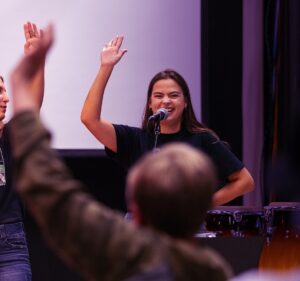
2. Good Teaching Often Involves Repetition
Here are things I have said 50,000 times in my career:
- Please spit out your gum.
- Everybody sit up nice, straight and tall with both feet flat on the floor.
- Play that measure again.
One question that often comes up after a guided observation is: “Why did you make them play that one section five times before you moved on?” The answer is because we are building skills and reenforcing good habits, and both of those take time.
Good teaching always includes repetition with feedback sprinkled in between the performance opportunities. Play that measure again, but this time with more air … sing that section once more, but softer … do that one more time, and make the articulation clearer.
The point of purposeful repetitions is to fix a problem, not to just “do it again.” Chances are, you won’t fix all the issues in one day, but you must work under the mindset that we are growing musicians. The goal with repetition is to simply get better.

3. Good Teaching Moves Fast!
Just keep swimming, just keep swimming! Just keep teaching, just keep teaching!
Pacing can be a struggle for young teachers. We can get caught up in trying to execute the “perfect lesson” that while we spend five minutes with the flute section to get that one measure just right, we failed to notice that the clarinet section is having a debate over who has the coolest water bottle, the trombone section has fallen asleep and the percussionists are trying to build a fort out of auxiliary instruments. This is definitely an example of poor pacing leading to classroom management issues!
Great lessons are fast-paced while still accomplishing learning goals. In tip #2, we discussed the importance of repetition, but at what point are the repetitions slowing down the pace of the class? Keep in mind, the goal is not perfection in one class, it is to get better each day. Five repetitions may accomplish that instead of 10. Good pacing also requires teachers to have a plan and know the score. Unfamiliarity can also slow pacing as we try to remember the next step in the lesson or who has what part. Preparation directly impacts pacing.
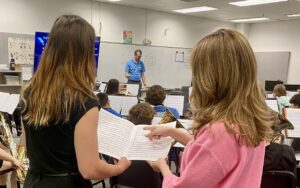
4. Good Teaching Includes Actionable Feedback
How specific can you get to the measure, the note and the performer?
Music educators are required to recall large amounts of information at a moment’s notice (That’s why it’s important to pay attention in those methods and technique classes!). Our ability to give actionable feedback is directly linked to our familiarity with each instrument, each voice part and the proper techniques for all the above. So, what is actionable feedback? Simply put, it’s the type of feedback that relays how to fix a problem instead of only identifying a problem. Here are some examples:
Feedback: Trumpets, someone played a wrong note.
Actionable Feedback: Trumpet player 4, the note on beat 3 of measure 4 is a B-flat not B-natural, so use your first finger instead of your middle finger.
Feedback: Going over the break is hard, clarinets. Keep working to make it sound better.
Actionable Feedback: Clarinets, as you go over the break, remember these three things: make sure your top teeth are on the mouthpiece, firm up the corners of your mouth and use more air.
The ability to give actionable feedback is demanding of the teacher. It requires us to detect errors, and it challenges us to be as specific as possible to the measure, the note and the performer. These are teaching skills that we must work on so that our students become better musicians.
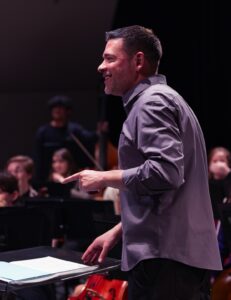
5. Good Teaching Means Teaching the Students Who Walk Through Your Door
This strategy — creating realistic expectations — may seem like a no-brainer, but it encompasses many things. The first is meeting students where they are. In a perfect world, every student would practice, and we wouldn’t have to review the same measure 19 times because they would have fixed the issue at home. However, this is not a realistic expectation for all our students. What if they can’t get their tuba home on the bus? What if there are noise restrictions in their apartment complex? What if they have dance, soccer and loads of homework, and your class is just something they do because they enjoy it? Sometimes the best strategy is to make the bold assumption that none of our students have practiced and just teach the music. Meet them where they are.
The second part of this strategy has to do with building relationships with your students. We need to know our students as musicians (How well do they play/sing? What are their weaknesses?) and as human beings who have a life outside of our classroom (What other activities are they involved in? What is their home life like? Do they take feedback easily, or do I need to sugar coat it?). This knowledge directly impacts how we teach them. It is our responsibility to know how each student learns and what teaching strategies work best for each of them; it can’t be a one-size-fits-all model.

6. Good Teaching Means Loving Music and Loving Teaching
In a recent guided observation with my secondary methods class, one of my students remarked, “It looks like Mr. Graham really loves teaching middle school band.”
It was evident how much the teacher we observed enjoyed what he was doing. He was patient, helpful and genuinely happy. He modeled for his students on his trumpet. He became excited when the young musicians did something well. He was encouraging when they struggled with a skill. He was firm, but kind.
When he spoke with my students after class, he shared resources that helps him be a better teacher (i.e., lists of books and podcasts). He spoke of ways he continues to make music outside of teaching middle school band.
It’s important that our students see that we love what we do and that we love teaching them. It demonstrates that we care about them, their successes, their areas for growth and what we can accomplish as an ensemble.
__________________________________________
Although these were some of the takeaways from our guided observations, it’s important that we remember these things throughout our teaching career. It is easy to get caught up in the next big performance or collecting order forms from the cookie dough fundraiser, but at the end of the day, our students deserve good teaching. The goal for us as well as our students should be to get better each day.










